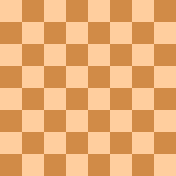
- Chess World Cup
- FIDE Grand Prix
- Olympiad
- World Championship
- List of strong tournaments
- List of world championships

- Checkmate patterns
- Chess openings
- Chess strategy
- Chess tactics
- Chess theory
- Endgames
- Pawn structure
- Problems/Compositions












| a | b | c | d | e | f | g | h | ||
| 8 |

                               |
8 | |||||||
| 7 | 7 | ||||||||
| 6 | 6 | ||||||||
| 5 | 5 | ||||||||
| 4 | 4 | ||||||||
| 3 | 3 | ||||||||
| 2 | 2 | ||||||||
| 1 | 1 | ||||||||
| a | b | c | d | e | f | g | h | ||
Losing chess (also known as Antichess, the Losing Game, Giveaway chess, Suicide chess, Killer chess, Must-Kill, or Take-all chess) is a chess variant in which the objective of each player is to lose all of his pieces or be stalemated, that is, a misère version. In some variations, a player may also win by checkmating or by being checkmated. Losing chess is one of the most popular of all chess variants.
The origin of the game is unknown, but believed to significantly predate an early version, named Take Me, played in the 1870s. Because of the popularity of Losing chess, several variations have spawned. The most widely played (main variant) is described in Popular Chess Variants by D. B. Pritchard.
The rules are the same as those for standard chess, except for the following special rules:
A player wins by losing all his pieces, or being stalemated. Apart from move repetition, draw by agreement, and the fifty-move rule, the game is also drawn when a win is impossible (such as if a dark-squared bishop and a light-squared bishop are the only pieces remaining).
| a | b | c | d | e | f | g | h | ||
| 8 |

                                |
8 | |||||||
| 7 | 7 | ||||||||
| 6 | 6 | ||||||||
| 5 | 5 | ||||||||
| 4 | 4 | ||||||||
| 3 | 3 | ||||||||
| 2 | 2 | ||||||||
| 1 | 1 | ||||||||
| a | b | c | d | e | f | g | h | ||
Because of the forced capture rule, Losing chess games often involve long sequences of forced captures by one player. This means that a minor mistake can doom a game. Such mistakes can be made from the very first move - losing openings for White include 1.e4, 1.d4, 1.d3, 1.Nf3, 1.Nc3, 1.f4, 1.h4, 1.b4, 1.h3, 1.a3, 1. c3 and 1.f3. Some of these openings took months of computer time to solve, but wins against 1.e4, 1.d4, and 1.d3 consist of simple series of forced captures and can be played from memory by most experienced players.
Work to weakly solve the main variant of Losing chess is ongoing. As of February 2015 it has been found that, with perfect play, White is able to force a win after 19 of Black's 20 legal responses to 1.e3. Only the outcome of 1...b6 is currently unsolved.
In the example diagram, 1...d6?? is a blunder since White can easily force victory. In this sequence, each move by Black from 2...Bxg4 through 16...Bxd3 is the only legal move available.
| a | b | c | d | e | f | g | h | ||
| 8 |

       |
8 | |||||||
| 7 | 7 | ||||||||
| 6 | 6 | ||||||||
| 5 | 5 | ||||||||
| 4 | 4 | ||||||||
| 3 | 3 | ||||||||
| 2 | 2 | ||||||||
| 1 | 1 | ||||||||
| a | b | c | d | e | f | g | h | ||
Implementations of the main variant can vary in regard to stalemate. "International" rules are as described above, with the stalemated player winning. FICS rules resolve stalemate as a win for the player with the fewer number of pieces remaining; if both have the same number, it is a draw (the piece types are irrelevant). "Joint" FICS/International rules resolves stalemate as a draw unless it is a victory for one player under both rulesets. The stalemate in the diagram is a win for White under "International" rules, a win for Black under FICS rules, and a draw under "joint" rules.
Rules are the same as the main rules, except:
Rules are the same as the main rules, except:
Rules are the same as variant 3, except:
Rules are the same as the main rules, except:
There are two major variants, Losers Chess (aka w17) played on ICC, and Suicide Chess on free ICSs. The goal in both games is to lose all of one's pieces, although in Losers Chess, a player can also win by getting checkmated.
| a | b | c | d | e | f | g | h | ||
| 8 |

  |
8 | |||||||
| 7 | 7 | ||||||||
| 6 | 6 | ||||||||
| 5 | 5 | ||||||||
| 4 | 4 | ||||||||
| 3 | 3 | ||||||||
| 2 | 2 | ||||||||
| 1 | 1 | ||||||||
| a | b | c | d | e | f | g | h | ||
Solution:
1.h3! a5 2.h4 a4 3.h5 a3 4.h6 a2 5.h7
David Pritchard, the author of The Encyclopedia of Chess Variants, wrote that the "complexity and beauty" of Losing chess is found in its endgame. He noted that, in contrast with regular chess, Losing chess endgames with just two pieces require considerable skill to play correctly, whilst three or four pieces endgames can exceed human capacity to solve precisely.